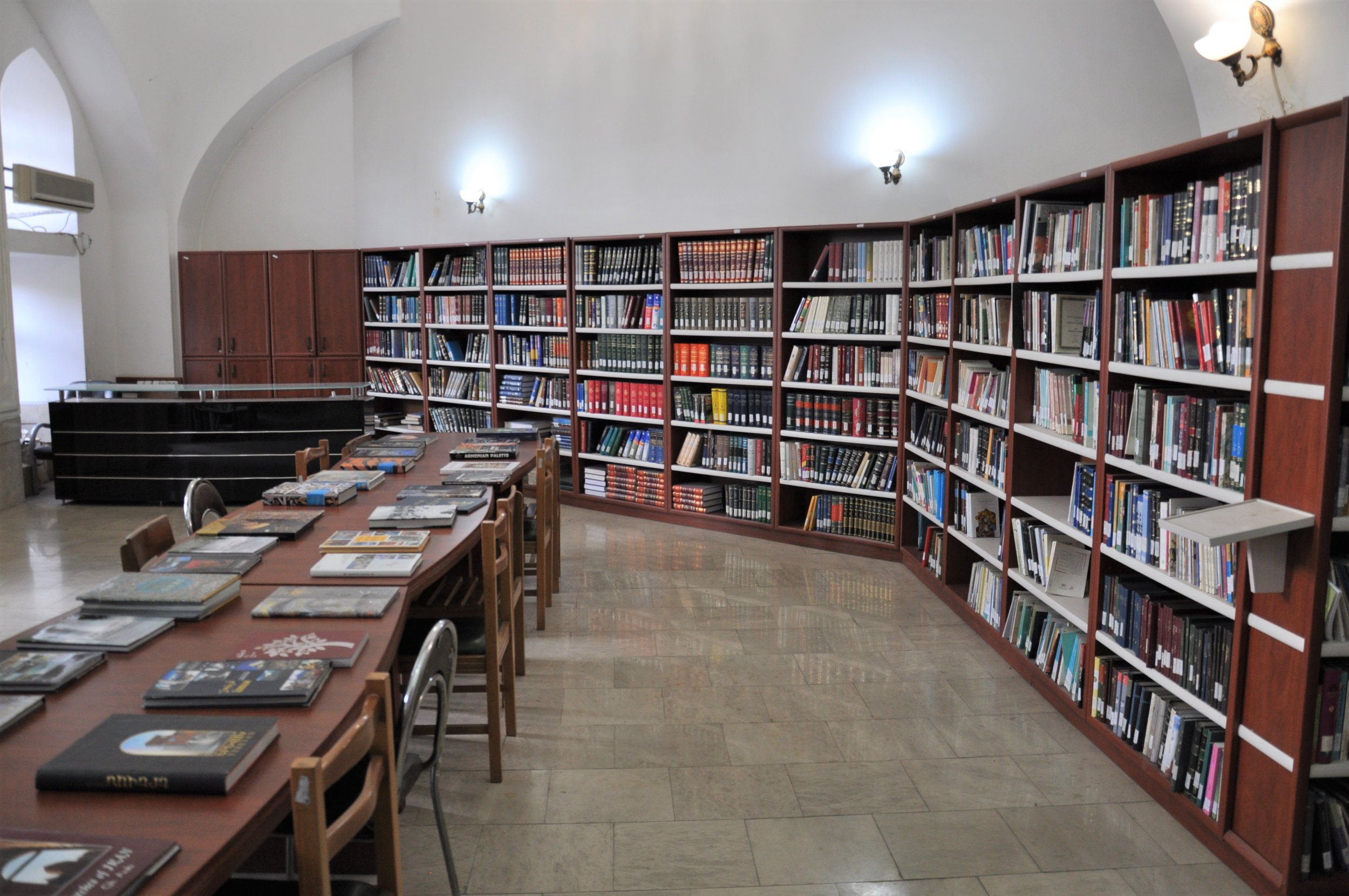Armenia & Azerbaijan and the Persian-era legacy
The University of Warsaw’s Przemysław Dałek investigates the problem of contested cultural heritage in the South Caucasus.
Today’s Armenia and Azerbaijan were once a part of Safavid Iran (16th to 18th century), Afsharid Iran (18th century), and Qajar Iran (18th and the beginning of 19th century), which resulted in Persian influences in their cultures. Currently, both countries tend to accommodate heritage assets from the “Persian period” for nation-building purposes and forging relations with Iran. Therefore, the cultural legacies from that time continue to resonate in international relations in the South Caucasus, thus bringing interstate conflicts.
Pic 1. National Museum of Azerbaijan Literature named after Nizami Ganjavi, Baku
If a heritage asset, developed in an earlier era and in a different political background, is being accommodated by at least two countries for their current socio-political needs, it becomes an example of contested cultural heritage. The idea of contested cultural heritage refers to artifacts, monuments, or sites with historical, cultural, or religious significance that become subjects of dispute or controversy between different communities or nations (Silverman, 2010). These disputes often arise due to claims over the ownership of a specific heritage asset and its interpretation. In the South Caucasus, contested cultural heritage from the Persian era is being used by the countries for nation-building processes or explaining territorial claims, and is therefore influencing trilateral relations between Armenia, Azerbaijan, and Iran.
Despite the fact that Armenia and Azerbaijan were under Persian influence longer than under the Soviet one, there are not many works on this subject. To elaborate on this phenomenon, during my DisTerrMem secondment, I researched controversies over the Persian era heritage. In my article, I elaborate on this topic using the examples of the Blue Mosque in Yerevan and the figure of Nizami Ganjavi: a poet whose heritage is a source of Azeri-Iranian disputes.
The Blue Mosque
Pic 2. The Blue Mosque, Yerevan
The Blue Mosque in Armenia’s capital – Yerevan, is undoubtedly the symbol of exemplary relations between Armenia and Iran. It was constructed in 1765–1766 by Hoseyn Ali Khan, the leader of the Erivan Khanate under the Afsharid dynasty. When Russians took control over the Khanate in 1827, it was the largest of eight mosques in the city. During the Soviet era, in the mid-1920s, the mosque lost its religious function and was transformed into a space for Armenian artists and intellectuals. After Armenia proclaimed independence in 1991, Iran sponsored a restoration process and later got the property for 99 years.
Today, the Blue Mosque is the only mosque open for worshippers in Armenia and has become a primary centre for Persian culture in the country. Besides the mosque, the complex hosts a library, an exhibition centre, an Iran-Armenia Friendship Association office, an office of the Iranian Embassy cultural attaché, and space for Persian classes.
Pic 3. The library in the Blue Mosque, Yerevan
Occasionally, the mosque itself is also claimed as a part of Azerbaijani culture. The arguments are related to the presence of a Turcic-speaking population on the territory of the Erivan Khanate and the Turkic origin of its rulers. The Blue Mosque is being enlisted by Azerbaijan as a “lost Azerbaijani heritage” and is occasionally used to create a revisionist narration against Armenia (Broers, 2019).
Pic 4. The monument of Nizami Ganjavi, Ganja
Nizami Ganjavi - Poet and Philosopher
Another reason for disputes in the South Caucasus is the figure of Nizami Ganjavi. He was born in the 12th century Ganja (present-day Azerbaijan) and was a Persian-speaking poet and philosopher renowned for his significant contributions to classical Persian literature. His impact has persisted over the centuries, shaping the work of the next generations of poets and adding to the vibrant cultural fabric of the Persian-speaking world. His nationality, however, has become the subject of dispute between Azerbaijan and Iran. The roots of the controversy can be dated to the formation of Azerbaijan SSR. The Soviet Union allowed for the development of national cultures within the socialist system and ideology (Suny, 1998). The pressure from Azerbaijan’s SSR elites to identify Nizami Ganjavi as an Azerbaijani poet echoed in Moscow, only being enhanced by the necessity of supporting Azerbaijan’s nation-building and the celebration of 800 years of Ganjavi's birth (Slezkine, 2000). Despite criticism in some literary societies of the USSR, this approach persisted and is presented in the nowadays Azerbaijan.
According to Azerbaijani authorities, Nizami Ganjavi is an Azerbaijani poet important for Azerbaijan’s national identity. Tehran contests Ganjavi's exclusive ties to Azerbaijan, and protests against blurring Ganjavi’s ties with Iran, like the alleged removal of Persian-language inscriptions at the Ganjavi mausoleum. However, it should be noted that the parties to the dispute are trying to reach an agreement on cultural issues and enhance cooperation in this regard.
Just two above-mentioned examples show the complexity of accommodating Persian-era heritage in the current socio-political contexts in Armenia and Azerbaijan. As cultural assets from other eras are being used in foreign politics causing tensions in the South Caucasus, the problem of contested cultural heritage in the Caucasus requires detailed and in-depth research.
Przemysław Dałek graduated in International Relations from the University of Warsaw. He is currently writing a dissertation tackling Sino-Russian relations on the example of Central Asia. The scope of his research interest includes international relations in post-Soviet space, socio-economic development, and the problem of emerging powers in Eurasia.





